

Get away from the grey, white, maroon late autumn and winter season for taking pictures of real steam trains in China! Chilly mornings, pleasant noon temperatures, colourful countryside: China is much more pleasant in spring than most of us would assume.
We’ll visit all three main types of locomotives which remain in service: the narrow gauge class C2, the interestingly shaped industrial Mikado class SY and the powerful branch line Mikado class JS. In addition there is a real chance to see a JF! Most lines offer good photographic potential and are well worth a visit – at any time of the year.
We’ll visit the still steamy coal mine lines in the far north east of the country. Beside industrial backdrops you can get some nice rural shots in a partly mountainous area as well.
An outstanding narrow gauge line will give us some calm days. Huanan is the last remaining narrow gauge line in the forests of Manchuria which is still steam operated. An extraordinary feature is that they have banked trains (trains with a pusher engine) from Lixin up to the summit. This spectacle is unique in the world now, as there is no other narrow gauge line any more that has regular, steam banked trains.
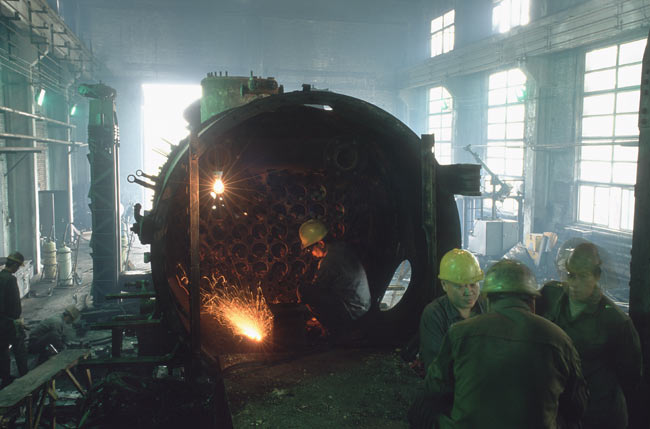
|
Date |
Itinerary |
|
28.04. |
Departure America/Europe to Beijing |
|
29.04. |
Morning arrival in Beijing, connection flight to Haerbin, charter bus to the railway station Haerbin, departure by overnight train N27 (or K411), dep. Hearbin 19.20 hrs (or 20.40 hrs). |
|
30.04. |
04.37 hrs (or K411: 06.25 hrs) arrival Jixi, visit to the coal mine systems of Jixi, hotel Jixi |
|
01.05. |
Visit to the coal mine lines around Jixi, evening continue to the narrow gauge line Huanan. Hotel Huanan |
|
02.05. |
Linesiding on the railway line at Huanan, overnight in private houses in Lixin or return to the hotel in Huanan (according to personal preferences) |
|
03.05. |
Linesiding along the narrow gauge railway at Huanan, Hotel Huanan |
|
04.05. |
In the morning linesiding along the narrow gauge line at Huanan, at noon contiune by charter bus to Jiamusi, overnight train 2096, departure Jiamusi 15.16 hrs |
|
05.05. |
05.38 hrs arrival Shenyang, charter bus to Fuxin (ca. 210 km/130 miles), pictures in the coal mine of Fuxin, after sunset we’ll continue to Beipiao (93 km/58 miles), hotel Beipiao |
|
06.05. |
Charter bus for linesiding at the coal mine line of Beipiao, hotel Beipiao |
|
07.05. |
Line siding around Beipiao, in the evening continue to Chaoyang (41 km/25 miles), hotel Chaoyang (if Chaoyang is dieselised: continue to Nanpiao (101 km/63 miles), hotel Nanpiao) |
|
08.05. |
Visit to the local line Chaoyang, in the evening continue to Nanpiao (60 km/37 miles), hotel Nanpiao) |
|
09.05. |
Linesiding around Nanpiao, in the evening continue to Huludao (48 km/30 miles), hotel in Huludao |
|
10.05. |
Charter bus for line siding along the lime stone railway of Huludao, 20.01 hrs by overnight train K187/190 to Yanzhou |
|
11.05 |
08.11 hrs arrival Yanzhou, charter bus to visit the Zoucheng coal mine railway, hotel Zoucheng |
|
12.05. |
Charter bus for line siding along the Zoucheng coal mine lines, overnight train K108 to Beijing, departure from Yanzhou 21.47 hrs |
|
13.05. |
05.30 hrs arrival Beijing, transfer to a hotel for having a shower and breakfast, transfer to the airport and return flight to Europe/America, arrival Europe in the same evening |
Once Huanan was the starting point of a large forestry railway system. This 762 mm narrow gauge railway survived because of the existence of a coal mine 46 km east of Huanan. The remaining line climbs over a pass 2.5 km west of Lixin. From both sides there are steep gradients and sharp curves. The gradient against loaded coal trains is so steep, that every loaded train needs a banker at the rear end of the eight-wagon-trains. This operation is the last known regular banked narrow gauge steam train in the world!
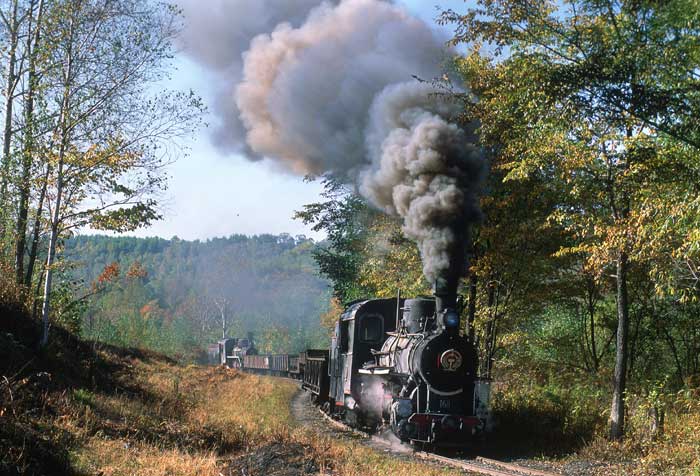
Because it’s a long way to get there, the scenery is very diverse and attractive, and only two to four pairs of trains run during daylight we will spend three days here. The distance between Tuoyaozi and Lixin is approximately nine kilometres. As there is no passable road we have either to walk or use the daily railcar. Many times we saw the track gang’s speeder/track motor running just behind one of the freight trains. This would be another option to avoid long walks. The use of local motorbikes is also possible but not really recommended. If you know the style of driving in China you can imagine what I mean. Either way, it’s everybody’s own decision. Walking some fifteen kilometres in a whole day is not that far on a beautiful spring day. Railcar or motorbike transport in Huanan is not included in the tour price. Unfortunately, the only accommodation possible in Lixin is in a filthy private house with no facilities at all. This is the place where the trains get the banker on the rear. In addition there are wonderful photo positions close to Lixin. As a result, it is worth thinking about spending one night in such surroundings, where the locals have to suffer the whole year. You may spend the night in the good hotel in Huanan if you prefer, but you’ll probably miss the possibility of getting a banked morning train.
In the unlikely case Huanan is having one of its occasional operating breaks, we have an alternative: Jixi. The coal mine system of Jixi is one of the steamiest places remaining in China. There are more than 20 class SY steam locomotives serving several different coal mines. Some of them have lines through rural countryside while others offer impressive industrial backdrops. The traffic is somewhat unpredictable, but there are some fixed points: the morning and the late afternoon shift change, when locomotives return to their home base. Thereafter trains are running in all directions, sometimes double headed and, rarely, double headed and banked.

The coal mine system of Tiefa was dieselised in 2004/2005 for freight services. Fortunately, most of the passenger trains remain steam hauled. According to high ranked officials, they’ll keep their steam locos running for at least another three years. A diesel-hauled passenger train would be twice as expensive as a steam-hauled service. On the four lines there are some 20 steam hauled passenger trains a day, often with several departures within a few minutes of each other. So this system is still worth a visit with some very exciting action and photo locations.

The most scenic part of the system is the line from Diaobingshan (the operational centre) to Faku. Trains pass through a tunnel on this line. This line is usually diesel operated but we’re trying to arrange a steam hauled train on this line. Chances are not too bad as we have had good relations with this company for several years. Anyhow, the other lines offer good potential too. The station at Diaobingshan alone is worth spending several hours around the platforms and the photogenic pedestrian bridge.
As they haven’t a turntable or a wye on each line, locomotives run tender first in one direction and chimney first the other. It’s unpredictable which way will be tender first and which one chimney first. A visit to the depot and the stabling point are also planned. Tiefa’s SY’s are nicely maintained and include two 1999-built engines. Tiefa has also restored a now unique YJ class 2-6-2 and a classic US-built wartime 2-8-0 (Lima 1943), KD6 497. Due to the high costs we’ll not charter either of these locomotives unless the tour has more than 16 participants, which is rather unlikely.
On our way from Tiefa to Beipiao we’ll make a break in Fuxin. Here there’s an open cast mine where several passenger trains are still steam operated. Since 2005 all trains are steam hauled . Many steam trains are tender first and the scenery is really industrial. We’ll spend only one afternoon here and then continue to Beipiao.
Beipiao is a new discovery. Although in 2003 stated as totally dieselised, Japanese railway enthusiasts reported in 2006 that six SY’s operate on a 41 km long line. Most interesting and unique in today’s China is the complete overhaul of a class JF locomotive in Beipiao for the short local line in Chaoyang. Chaoyang has also been reported dieselised but seems to have returned to steam in 2006. As there are no proper reports and all investigation by telephone failed, we’ll do a bit of pioneering research. As we have good maps of this area and well experienced guides we’re optimistic of find a rewarding site for steam photography.

The coal mines around Nanpiao are linked by two standard gauge lines. In Autumn 2006, steam was still in use on these lines. Two BJ class diesel (also quite rare now) disturb the SY action. However, there are still sufficient steam hauled trains to make some nice shots. Nanpiao is surrounded by very interesting mountainous countryside. There are steep gradients, two long bridges and sections of free line as well as industrial backdrops. The steam powered passenger trains in the early morning and in the late afternoon are especially interesting for photography. The company are wanting to purchase further diesel locomotives second hand so it may be possible that this nice system will be completely dieselised soon.
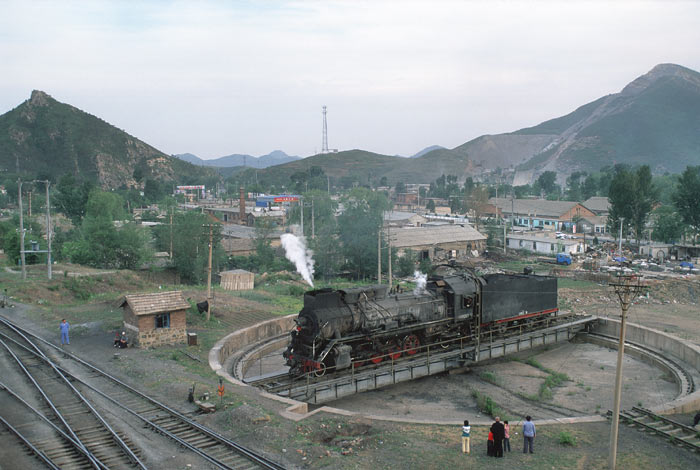
We’ll experience spectacular climbs on the lime stone railway at Huludao. Near the summit, trains are well below pedestrian speed or even stalling! In use are two (filthy) locomotives of the strong JS class. These locomotives are without deflectors. Another highlight is the turntable at both ends of the line of which one is freely accessible to photographers. For shunting purposes in the cement factories they own two SY’s. During daylight, there are several trains, one in the early morning (best for photography with the train coming out of the light), a pair around noon and one in the late evening, once again good for glint shots.
On this trip we’ll cover long distances by rail. As we’re travelling during the Chinese holiday season we may not be able to get soft sleeper tickets, although booked well in advance, but we’ll do our best.
We expect morning temperatures around zero degrees Centigrade (about 32 degrees F) in the far north while in Beijing afternoon temperatures can already reach more than 25 degrees Centigrade (mid-to high 70s F).
The voltage in China is 220 Volts, 50 Hertz. Sometimes you need an adapter for the power outlets. China uses the European mobile phone (GSM) standard.
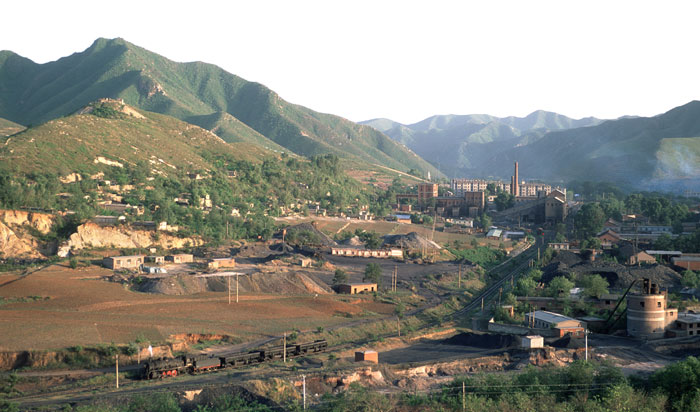
This tour is designed for both dedicated photographers and video filmmakers. Our philosophy is to provide opportunities to get that perfect sunrise shot rather than a time consuming 5-star breakfast buffet. On occasions lunch will be served as a packed meal. Alcoholic beverages (including beer) are not included in the tour price.
Hotels, charter buses and trains represent the standard of our host country, which may deviate from European and American expectations. While we will endeavour to avoid long walks, some photo positions may require an extra but worthwhile effort.
The hotels used will be of medium class, but in remote areas sometimes they are more basic. The train rides are booked in soft sleeper class (four berth compartments). As the reservation system in China is a typical quota system where the station of origin typically gets an allotment of 50 % of the available tickets, it is not guaranteed that we can get soft sleeper tickets for all our rides. In such cases we’ll use hard sleeper class, which, however, is not as hard as the name suggests. Hard sleeper compartments are open and normally comprise six berths. Short daytime trains may have to be booked in hard seats (if available).
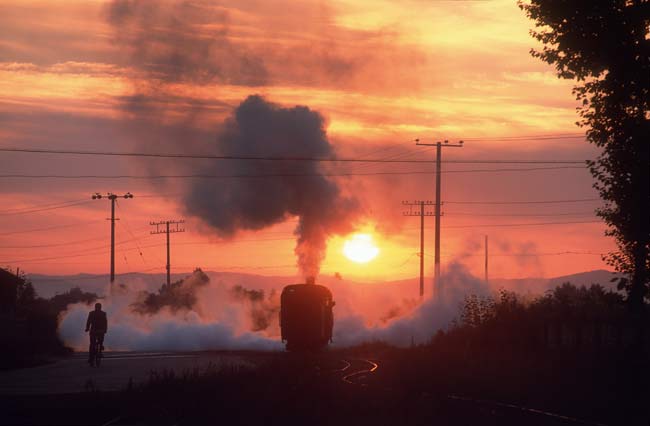
Hygienic and environmental standards in China do not conform to European or American expectations. Carrying some toiletries in your photo bag is hence advisable.
Please bear in mind that accommodation and transportation in China falls short of EU/US safety standards. Always use common sense when crossing roads and railway tracks. FarRail Tours cannot be held responsible and will not accept any liability whatsoever in the case of any accident or damage. We suggest you take out a comprehensive overseas accident and health insurance policy.
Registration period expires February 11th, 2007
Later registrations will be accepted if flights and hotels are still available. If you’re not sure whether you can participate or not, please let us know your interest well in advance so that we can hold a place for you.
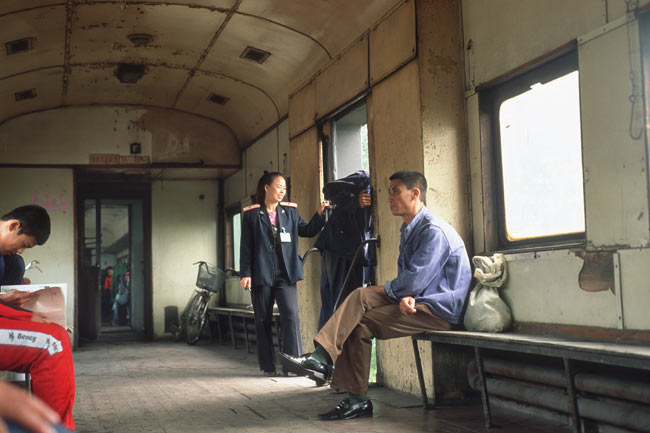
| Spring Green in China | from 10 participants | ca. £1,880 |
| 28.4. – 13.5.2007 | 5 to 9 participants | ca. £2,090 |
| Single room surcharge | £135 |
If you book together with North Korea you can deduct £405 from the tour price. For land only bookings please deduct £385.
Minimum number of participants: 5
Maximum number of participants: 18
The price includes:
Not included are:
Above prices are based on specific bookings with the respective airlines, which have to be confirmed well in advance. Your early booking is hence essential.
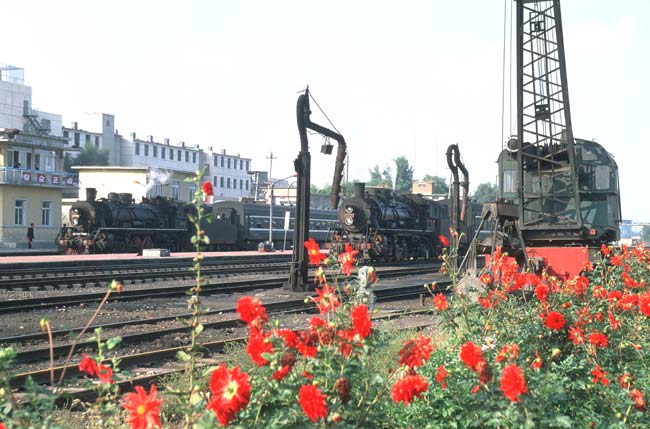
© FarRail Tours - e-mail: Bernd Seiler - zurück zu FarRail Tours
Click here to return to FarRail Tours